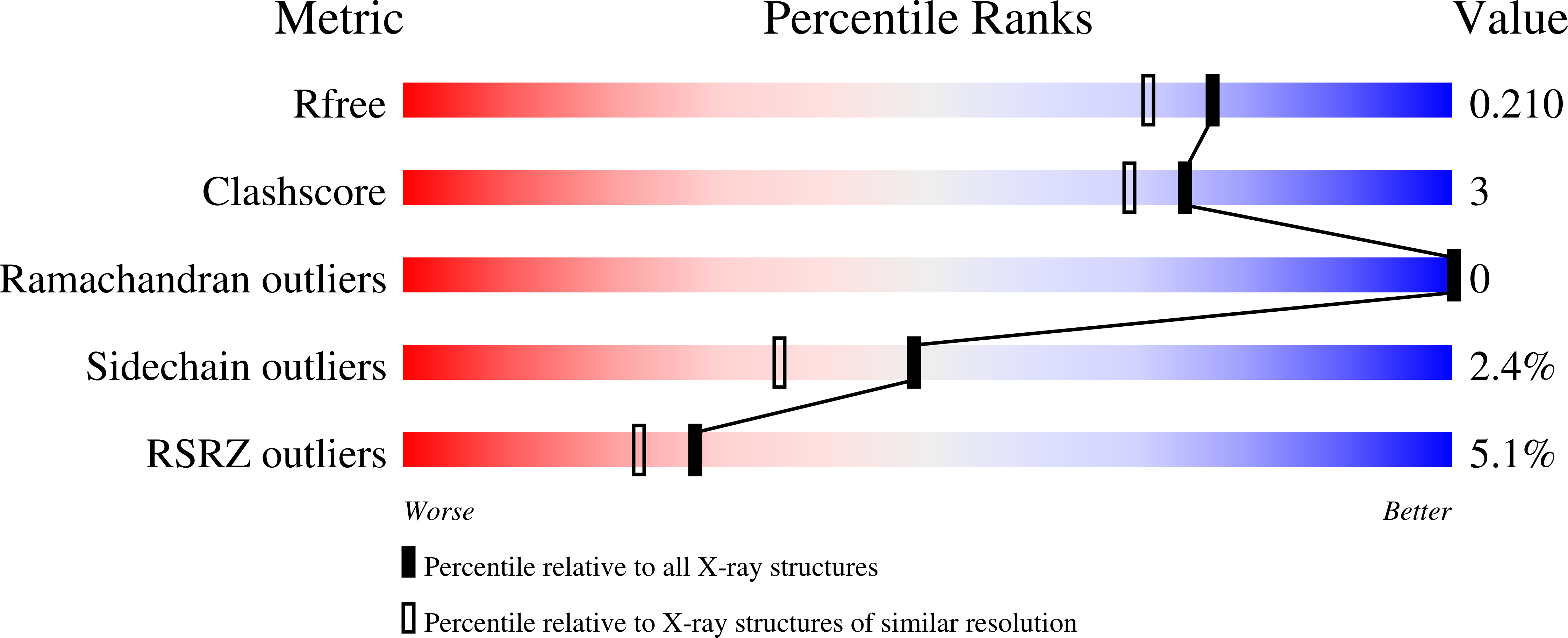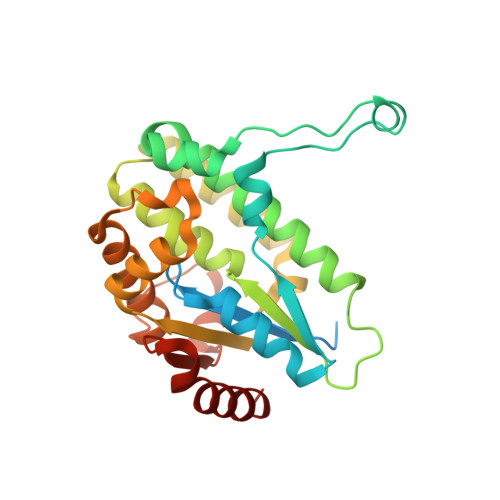Nonenantioselectivity Property of Human Deoxycytidine Kinase Explained by Structures of the Enzyme in Complex with l- and d-Nucleosides.
Sabini, E., Hazra, S., Konrad, M., Lavie, A.(2007) J Med Chem 50: 3004-3014
- PubMed: 17530837
- DOI: https://doi.org/10.1021/jm0700215
- Primary Citation of Related Structures:
2NO0, 2NO1, 2NO6, 2NO7 - PubMed Abstract:
Biological molecules are predominantly enantioselective. Yet currently two nucleoside analogue prodrugs (3TC and FTC) with opposite chirality compared to physiological nucleosides are clinically approved for the treatment of HIV infections. These prodrugs require conversion to their triphosphorylated forms to achieve pharmacological activity. The first step in the activation of these agents is catalyzed by human deoxycytidine kinase (dCK). This enzyme possesses the ability to phosphorylate nucleosides of the unnatural L-chirality. To understand the molecular basis for the nonenantioselectivity of dCK, we solved the crystal structures of the enzyme in complex with the L-enantiomer and of its physiological substrate deoxycytidine and with the L-nucleoside analogue FTC. These were compared to a structure solved with D-dC. Our results highlight structural adjustments imposed on the L-nucleosides and properties of the enzyme endowing it with the ability to phosphorylate substrates with nonphysiological chirality. This work reveals the molecular basis for the activation of L-nucleosides by dCK.
Organizational Affiliation:
Department of Biochemistry and Molecular Genetics, University of Illinois at Chicago, 900 S. Ashland Avenue, M/C 669, Chicago, Illinois 60607, USA.
















